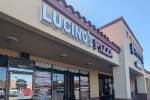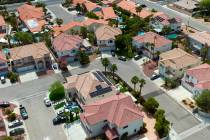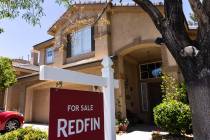A look at Nevada’s contribution to the foreclosure crisis
Fannie Mae and Freddie Mac are separate agencies that divulge different data while withholding other information, including delinquency rates and credit losses. While Freddie Mac shows Nevada’s losses as a percentage of losses nationally, Fannie Mae does not provide a national total. On the other hand, Fannie Mae’s disclosures help profile homeowners with information on the average loan-to-value ratios and credit score and comparisons with homeowners elsewhere in the country. Freddie Mac’s report doesn’t.
As of June 30, in Nevada, for Freddie Mac:
• The unpaid principal balance on home loans was $21 billion, which represents about 1 percent of Freddie Mac’s nationwide unpaid balance of $1.87 trillion.
• There was $3.5 billion worth of delinquent debt on loans, which represents 4 percent of Freddie Mac’s $95.3 billion worth of delinquencies nationwide.
• Freddie Mac acquired $272 million worth of property during the second quarter of 2010; that made for an inventory in Nevada worth an estimated $355 million. The figure represents 3 percent of Freddie Mac’s nationwide inventory worth $11.3 billion.
• There have been $235 million worth of credit losses on loans guaranteed by Freddie Mac, which represents 6 percent of its credit losses nationwide of $3.85 billion.
As of June 30, in Nevada, for Fannie Mae:
• Unpaid principal balance on loans guaranteed was $33.3 billion, which represents 1.2 percent of Fannie Mae’s nationwide unpaid balance of $2.78 trillion.
• The average unpaid principal balance on loans was $173,088, which was higher than the national average of $154,183, the Florida average of $143,140, the Arizona average of $157,064 and the “select Midwest states” average of $122,902, but lower than the California average of $216,655.
• Just under 13 percent of the home loans were in “serious delinquency.” The percentage is more than twice the national average of 5 percent and higher than other troubled states, such as Arizona and California. Other troubled states were between 5 percent and 7.5 percent except Florida, which was at more than 12 percent.
• On average, loans were worth 75 percent of the value of the property at the time of purchase, which is comparable with other troubled states and the national average.
• On average, loans are worth 129 percent of the value of the property, which is higher than the national average of 74 percent, the California average of 75 percent, the average for select Midwest states of 78 percent, the Arizona average of 100 percent and the Florida average of 102 percent. The swing in loan-to-value ratios in Nevada echoes the 57 percent drop in home values the past four years, which leads the nation.
• Fifty percent of loans have a loan-to-value ratio of 125 percent or greater, which is nearly double the next highest state percentage. For instance, it is much more than the national average of 6 percent and more than the other troubled states, which ranged from a low of 4 percent in the select Midwest states to a high of 27 percent in Florida.
• The average credit score of a Nevada homeowner was 728 at the time the loan was issued, which means most buyers had good to excellent credit. Now, Las Vegas has one of the worst credit scores, according to the Experian credit bureau, in part because the unemployment rate is the highest in the country. Local real estate agents and lenders, according to recent Review-Journal accounts, estimate 35 percent to 50 percent of Southern Nevada residents wouldn’t qualify for a home loan because credit scores have dwindled as unemployment has climbed and home values have dropped.
• Nearly 78 percent of loans were fixed-rate mortgages — rather than interest-only loans or adjustable-rate loans or some other financing — which is a lower percentage than the national average of 90 percent and lower than the other troubled states, which ranged from 85 percent to 91 percent. With 10 subprime mortgages for every 100 housing units in 2005, Nevada’s rate of subprime mortgages led the nation, and was three times the national average of 3.6 subprime loans for every 100 housing units, according to a 2008 report from the Federal Reserve Board in Washington, D.C.
• Nearly 80 percent of loans were for primary residences, which is lower than the national average of 90 percent and lower than the other troubled states, which ranged from 82 percent in Florida to 94 percent in select Midwest states. A Review-Journal examination recently found that about 40 percent of single-family homes in Southern Nevada were not owner-occupied, which is a higher ratio than other parts of the country. In addition, Clark County assessor records show that nearly 65 percent of homes foreclosed on between 2007 and the early part of 2010 were not owner-occupied.
• As a percentage of nationwide credit losses, Nevada climbed from just more than 1 percent in 2007 up to 5 percent in 2008 and up to 6.5 percent last year before dropping to 4.6 percent from January through March and rising again to 6.2 percent from April through June. The percentage of national credit losses was much higher in other troubled — and much more populated — states, such as California, Arizona and Florida.
RELATED STORIES• Silver State has extra helping of bad debt to Freddie Mac, Fannie Mae
• Democrats, Republicans, differ on approach to mortgage firms
• Fannie Mae and Freddie Mac losses in Nevada


















